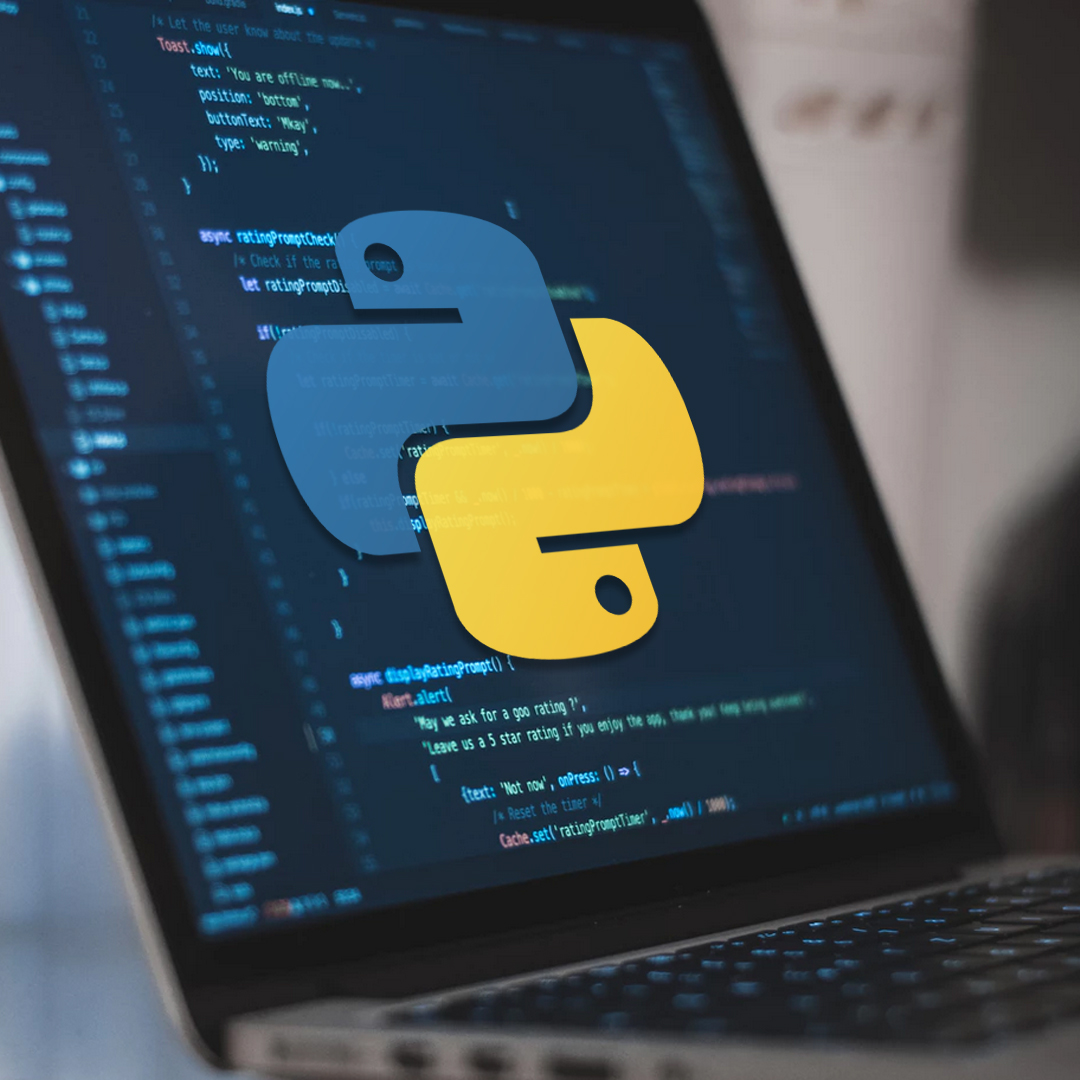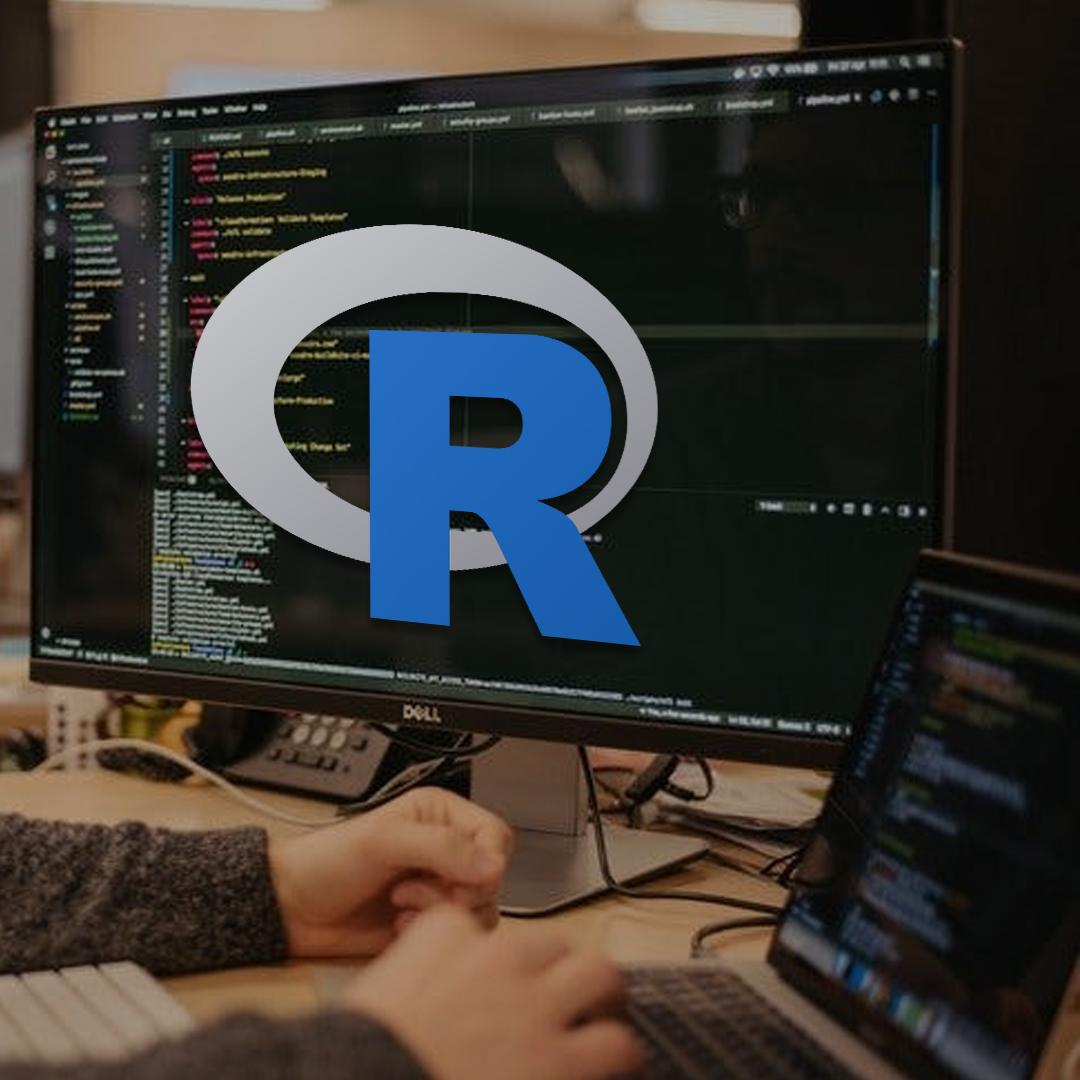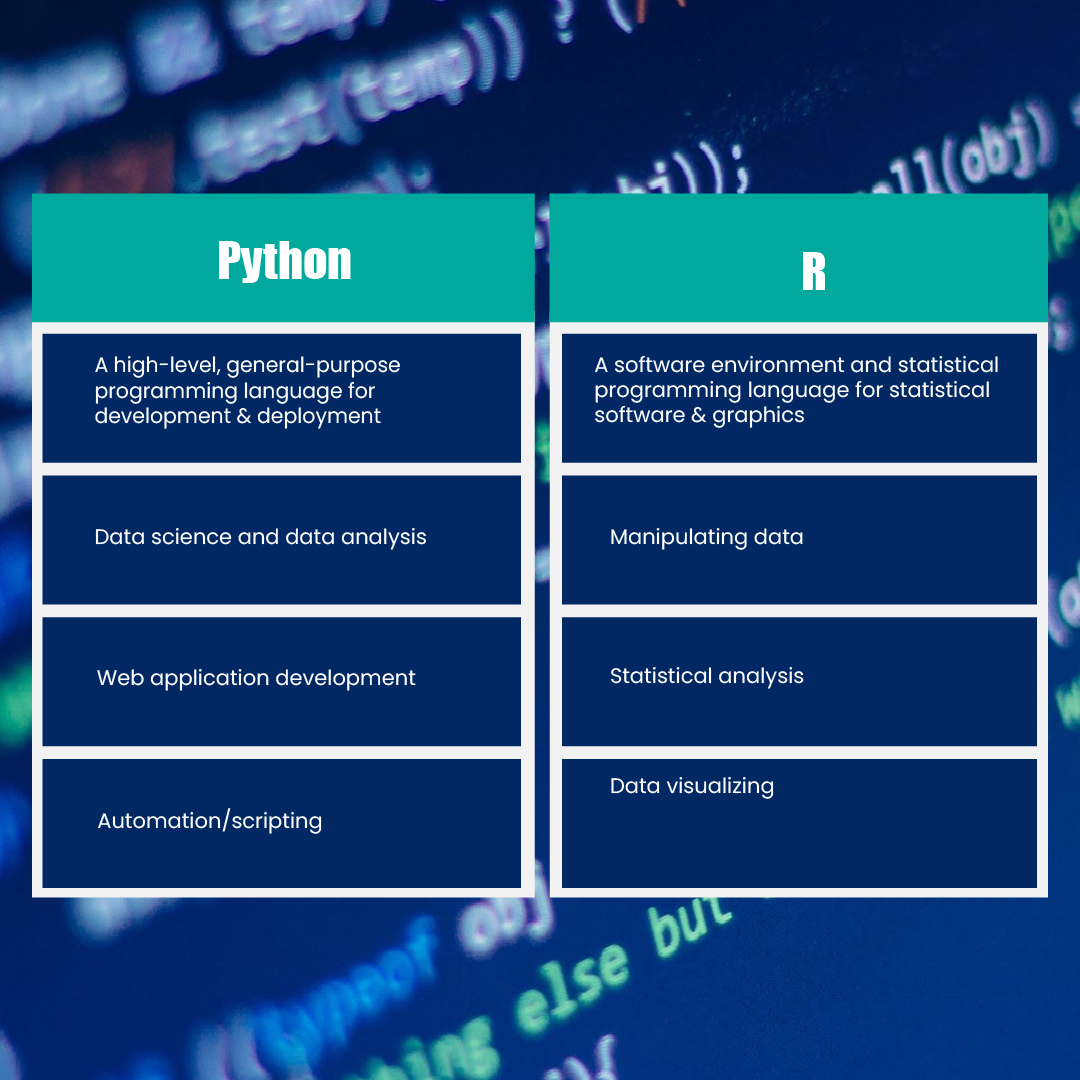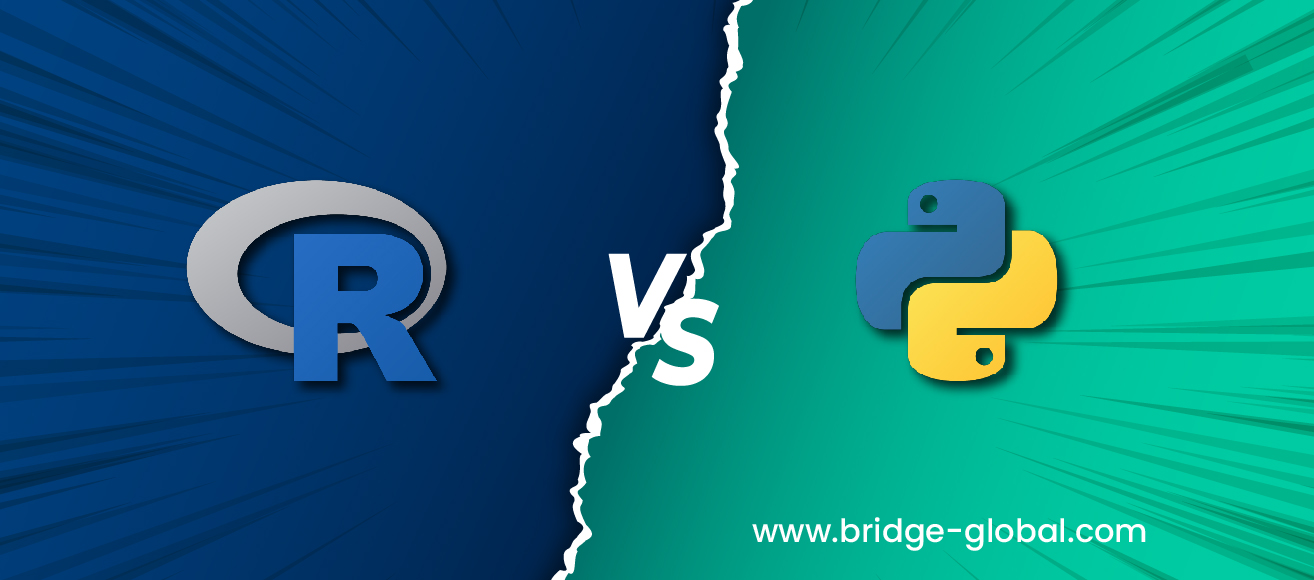R and Python: What’s the Difference?
R and Python are free and open-source programming languages for data science and analytics. Both of them have their own strengths and weaknesses, and hence choosing the right one depends on your use cases and problems that you are trying to solve.
In this blog, our focus will center on Python vs. R. We will also dive a little bit into what these programming languages are all about (what is Python and what is R?) and the differences between these two to decide the best data science tool. At the end of this blog, you will be in a position to choose the right language according to your situation.
Let’s move ahead and have a peek into the battle between R and Python which are striving to be the best data science tool. If you’re a newbie data scientist, it is crucial to get an unbiased evaluation of Python vs. R. Read on as we try to give you one.
What is Python?
To quote python.org, “Python is an interpreted, object-oriented, high-level programming language with dynamic semantics”.
Python is a high-level, general-purpose, multi-paradigm programming language created by Dutch programmer Guido van Rossum in 1991. Yes, it has been here around for 30 years!
Computer Science graduates and people with IT backgrounds find Python a favorable stronghold because it was originally created as a programming language for software development, although the data science features were added later. Moreover, it finds a first place in the list of the best programming languages for Machine Learning (ML).

Before moving on to discovering ‘what is R programming language’ and the difference between R and Python or R vs Python, let’s check out the reasons for Python’s popularity even among beginners and newbies.
1. Easy to learn
Thanks to its simplified syntax Python finds attracts favorable reactions from both experienced professionals and newcomers. This super-accessible programming language gives more prominence to natural language and hence offers better readability (thanks to its similarities with the English language). Even amateur developers can easily write and execute Python when compared to other programming languages like R.
2. Easy transition
Python allows for easy transition as professionals from other programming languages like Java or C++ can easily switch to Python thanks to its easy accessibility and readability. Experimenting with Python codebase is also easy.
3. A great and supportive Python community
Python’s presence here in the software development world itself contributes to its strong and supportive community that is vibrant and mature enough to support beginner to expert level developers. Elevating your knowledge of the Python programing language is cakewalk thanks to the easy availability of documentation, guides, and Video Tutorials.
4. Backing from prominent corporate sponsors
Big companies and corporates will have their own favorite programming languages which they adore and endorse. Research on the most in-demand programming languages used by US startups or the so-called unicorns conducted by Coding Dojo in 2019 stated that Python is the most sought-after programming language among the world's top tech companies with a market estimation of over $1 billion. In our quest to resolve the Python vs R deliberation, this is indeed an interesting piece of information. Python Programming language is greatly supported by Facebook, AWS, and especially Google.
5. Plenty of Python Libraries and Frameworks
It’s no wonder Python enjoys excellent libraries and frameworks which is expected from a programming language that has been in existence for a long. These libraries and frameworks make the lives of Python programmers much easier. Python developers can efficiently reduce their development time and focus more on application logic thanks to smart Python frameworks which are mainly of three types: full-stack (Python and Django frameworks), micro-framework (Flask and Bottle, and CherryPy frameworks), and asynchronous. Popular Python libraries are TensorFlow, Sci-kit Learn, Numpy, Keras, PyTorch, etc.
As you move ahead to choose between R and Python, you need to consider these Python features.
6. Highly functioning for hottest trends
With Python, you can be with the hottest trends such as Cloud Computing, Machine Learning, and Big Data. You can use Python for deploying machine learning at a sweeping dimension. Data scientists utilize Python programming language for web scraping, data wrangling, and many other tasks. Python language is a great choice for research and development in data science. If you are a data scientist struggling to decide between Python vs R, hang on with us a little longer.
Read more: What Is Machine Learning All About?
What is R?
In our journey to discover the differences between R and Python (or the Python vs R dilemma), it’s crucial to know what the R programing language is.
If you’ve ever wondered ‘what is R programming”, here’s the answer: R is an open-source programming language that's optimized for statistical computing, analysis, graphics, and data visualization.
It is a GNU package that is suitable for data miners, data analysts, data science scholars &researchers, and statisticians.
RStudio is R’s Integrated Development Environment (IDE) available as RStudio and RStudio Server.

The wide variety of R libraries and tools serve the following purposes:
- Data cleansing and prepping
- Crafting visualizations
- Preparation and assessing ML & deep learning algorithms
R programming language is open source and is designed for statistical computing and graphics with excellent supportive properties for machine learning, time series, linear regression, clustering, statistical inferences, etc.
Now before moving into analyzing the difference between Python and R and the Python vs. R debate, let’s have a quick glance at the reasons behind the popularity of the R programming language.
R is the most popular language in the Data Science realm. Let’s check out the reasons for it acceptance:
1. R is an all-encompassing package of statistical analysis toolkit
R programming language comes with every standard data analysis tool you need for accessing data in different formats, to enable several data manipulation operations, etc. It has all the tools needed for traditional and modern statistical models like ANOVA, Regression, Tree models, GLM. They are contained within an object-oriented framework facilitating easy extraction and merging of the required information.
2. Support from a big community
Programming language R has a thriving and expanding community helping you find solutions to complex, real-world problems. This strong community of R aficionados helps you with the implementation of R programming language in financial or data science fields.
3. Wide-ranging Library Support
R programming language enjoys a staggering number of more than 10k packages and thousands of built-in functions. These are great at fulfilling diverse requirements.
4. Cross-Platform Compatibility
R programming language has the superior caliber to support an extensive collection of operating systems. It can be deployed in a multiplicity of software and hardware configurations with no alterations, yet it offers a pleasantly seamless performance.
5. Amazing data visualization
R programming language is data visualization at its best. It is adept at creating almost any type of graph. It has an amazingly inbuilt library range that enables quick data presentations in the form of publication-ready graphs.
Differences between R and Python
It’s better for people who are interested in data science or computer programing to understand the differences between R and Python. Though both are free, open-source programming languages centering around data science, a few stark differences exist between them. The below table shows the broad categories of applications Python and R programming language attend to.

Let’s quickly explore a few other differences between Python and R.
- While Python is a programming language, R can be described as a statistical programming package.
- Beginners find Python easier to learn thanks to its English-like syntax, whereas the non-standardized code of R offers a rather rough learning curve for newbies.
- While R is more dominant in academics, Python is dominant in production. The status of being a full-fledged programming language makes Python a favorite for companies. Academicians favor the R programming language over Python and it has got its entry into the corporate world recently.
- While Python is a general-purpose, easy-to-understand language offering a more general approach to data wrangling, R is built to offer all the functionalities needed by statisticians and hence lends great data visualizations features.
- Python can support data analysis only with the setting up of external packages (Pandas, PyPi, etc.) whereas the programming language R has inbuilt packages for it. R statistical language supported with graphical techniques. Python is more of a deep learning language and is a language for development and deployment.
- Codes in R need more maintenance as it is a vector-based language. Python is more robust and easy to maintain.
- R offers multiple packages for accomplishing one task, while Python has a few packages for a single task.
- R is slower than Python. A weak code in R can be fairly slow.
- Python has an edge over R with its large datasets and flexibility, while the latter is superior when it comes to a number of good statistical libraries.
How do I choose between Python and R?
Both Python and R are highly in-demand skills and therefore choosing to learn any one is not a wrong choice. A wise decision between the two depends on a variety of factors ranging from your educational and technology background, interests, and career objectives.
There’s no faulty choice when it comes to learning Python or R. Both are in-demand skills and will allow you to perform just about any data analytics task you’ll encounter. Which one is better for you will ultimately come down to your background, interests, and career goals.
Your background
If you have programming experience with Java or C++, the learning curve for Python will be smooth. A person with a Statistical background will find R easier to learn. If you are a beginner in Data Science, Python can be a good choice as the R language can pose a hindrance in building expertise due to its complexity.
Your industry and colleagues
In which industry you belong to the background and skills of your colleagues also matter while choosing between R and Python. R has extensive uses if you are a market research analyst, analytics consultant, or management analyst who needs to use linear and nonlinear modeling, classical statistical tests, time-series analysis, classification, clustering, graphical display, and so on. You don’t need any programming skills for R. Python is a production-ready language used for rapid application development and scripting, or glue, language.
The problems you’re solving
R is the go-to language if you are into statistical learning while Python is the choice of machine learning and large-scale applications chiefly for data analysis within web applications.
Importance of charts and graphs
Are charts and graphs important in your field? R programming language helps you visualize your data in appealing graphics. As Python is a general-purpose language for application development it is easier to integrate into an engineering environment.
The Key Takeaway
Both Python and R are useful programming languages in statistics, computer science, analytics software, and data analysis. If you go by numbers Python gets more votes as the most popular language across the wider tech community. For example, indexes such as TIOBE, Stack Overflow, PYPL, and RedMonk show higher ranking for Python. This indicates the fact that Python is enjoying support from a robust community.
if your colleagues/employees have no prior experience or background in data science or programming, R is a wise choice. If your organization is conducting data science projects with a dedicated team of software programmers, Python is a great pick. Are you having difficulty kicking off a Python project and are looking for efficient Python expertise, we are happy to help.
A great tip to solve the dilemma is learning more than one programming language. It will enhance your competitiveness and you can put your skills in a wide variety of needs. The most fortunate thing is that you can easily learn a new language if you have mastery over another.



